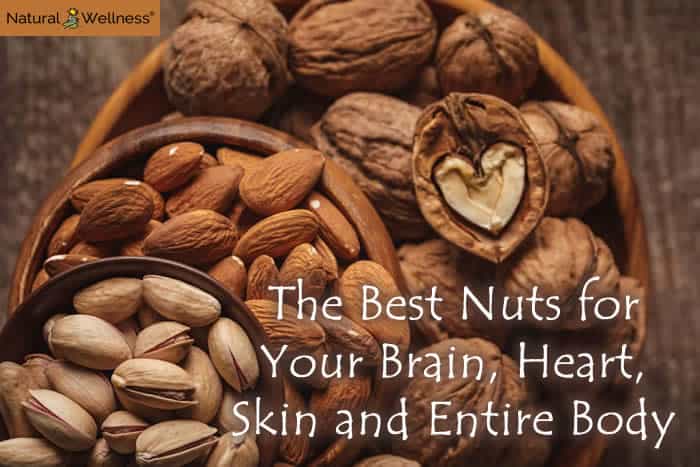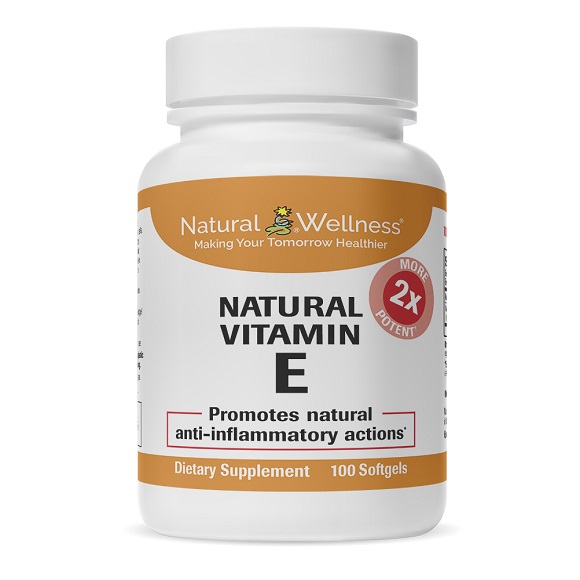

We’re going nuts for…nuts. Not only are they delicious, but the puns are endless. They’re natural, packed full of nutrition, and brimming with protein, antioxidants, omega-3s and fatty acids. They’re the perfect snack. Cheap, healthy and readily available. It’s hard to go wrong with nuts.
In a systematic review of articles dealing with nut consumption and health, researchers generally found nuts beneficial to humans and often suggest eating nuts as an effective addition to many disease prevention and treatment regimens (1).
But with so many different types, it’s hard to know which are best.
In navigating the world of nuts, and seeds by extension, our aim is to highlight which types of nuts can affect specific parts of your body and how to go about using specific nuts to treat specific ailments.
With so many varieties of nuts offering different benefits hopefully we can clear the air of some nut and seed questions that need addressing.
- Are nuts good for eyes?
- Is peanut butter bad for arthritis?
- What kind of nuts are good for you?
We’ll answer these questions and a whole lot more. Read on if you’re nuts for nuts.
The Best Nuts for Healthy Hair
Let’s start at the top. Hair can be a great indicator of health, with a shiny head revealing a lot about what you eat and how well you take care of yourself.
From a social dynamic standpoint we tend to put a lot of emphasis on hair as a non-verbal way to communicate style, status, or even fertility. That’s why you may be interested to know that in a hair cosmetics review published by the International Journal of Trichology, researchers found Brazilian nuts and products derived from them to be highly effective at managing split ends (2). Walnuts and flaxseed have also been known to help give hair a healthy shine as well.
And let’s not forget, the Ancient Greeks used hazelnuts for baldness (4). We think they were onto something. Here’s a delicious waldorf salad recipe to get you started (5).
The Best Nuts for Clear Skin

When it comes to acne – try incorporating Brazilian nuts, cashews or sunflower seeds into your diet. All are rich in antioxidants and zinc, in particular, which helps the sebacious glands in our skin produce oil and stay healthy (8).
Just remember to be patient. It takes up to 6 weeks for new skin cells to form and make their way to the surface, so give yourself at least that amount of time to see a difference in your skin after incorporating nuts into you routine (8).
The Best Nuts for Brain Health
When it comes to your brain, the cashew is a secret weapon in managing serotonin levels and stabilizing mood. Experts believe just two handfuls of cashews per day can alter mood in a positive way due to their high levels of mood-stabilizing vitamins like as B6, magnesium, niacin, and l-tryptophan (9). The high levels of l-tryptophan are particularly interesting as they assist in the body’s natural production of serotonin. And, as far as the brain goes, more serotonin makes you happy.
The Best Nuts for Vision Support
- Pistachios
- Almonds
- Hazelnuts
- Peanuts
- and even sunflower seeds are all good for your eyes and vision due to how high in vitamin E they all are.
Vitamin E is a pungent antioxidant that helps protect cell membranes against free radical damage throughout the body.
 Making sure you’re getting enough vitamin E through nuts has also been shown to slow the progression of cataracts and age-related macular degeneration (7).
Making sure you’re getting enough vitamin E through nuts has also been shown to slow the progression of cataracts and age-related macular degeneration (7).
If pistachios and almonds aren’t your thing, maybe try pumpkin seeds or chia seeds sprinkled into a salad, or roasted and included in a pasta or stir-fry. Both are packed with vitamin E and also provide ocular support.
As far as we see it, there are many nuts good for eyes.
The Best Nuts for Fertility
Please excuse the explicit pun, but nuts could help boost sperm count and quality. According to a study published in The American Journal of Clinical Nutrition, researchers endorsed incorporating walnuts, almonds, and hazelnuts into your diet declaring that doing so “significantly improves the total sperm count and the vitality, motility, and morphology of the sperm (10).”
Let’s help our little swimmers out with a handful of nuts. Your future children will thank you.
The Best Nuts for Heart Health
Walnuts, chia seeds and flaxseed are among the nuts and seeds highest in omega-3 fatty acids. This is important as omega-3s are associated with lower risk of heart attack, stroke, and other cardiovascular events (11).
Additionally, in a study conducted over the course of 32 years with hundreds of thousands of participants, researchers found that eating a handful of walnuts or peanuts every day was associated with a 14% lower risk of cardiovascular disease, and a 20% drop in coronary disease versus people who rarely ever ate nuts (6). That’s huge.
If you’re looking for an answer to the question “is walnut good for heart patients,” the answer is yes!
The Best Nuts for Liver Health
Since most nuts are high in vitamin E, unsaturated fatty acids, and other antioxidants, they can be an effective way to help manage some forms of fatty liver disease by keeping down inflammation and other conditions that can lead to and exacerbate liver problems.
The 4 nuts with the highest unsaturated fatty acid levels are:
- Walnuts
- Almonds
- Macadamia Nuts
- Pecans
Published recently in Liver International, experts also found “Higher nut consumption was significantly associated with lower prevalence of NAFLD (13).”
The Best Nuts for Immunity and Arthritis

The Brazilian nut is packed full of the powerful antioxidant selenium, and just 4-5 nuts will provide the recommended daily amount. Just like walnuts and peanuts, Brazilian nuts are also rich in vitamin E to help support immunity (8).
Some of you may be wondering “is peanut butter bad for arthritis?” No. In fact, adding peanut or cashew butter to any arthritis treatment regimen is recommended.
According to the Arthritis Foundation, peanuts are one of the cheaper nuts while still containing high levels of magnesium, which helps manage the inflammation associated with arthritis and joint pain (12). Crush and sprinkle them into your favorite salad, pasta or even over dessert for a tasty crunch.
The Best Nuts for Your Waistline
While almonds and walnuts are both high in calories, recent studies comparing nuts to other snacks found “weight gain was not observed in the walnut treatment, which, curiously, was associated with a decline in waist circumference.”
Basically, next time you need a snack, grab a handful of walnuts or almonds. Almonds and walnuts also contain both soluble and insoluble fiber, help clear your digestive tract, and help you lose weight.
In addition to being great for vision and packed with antioxidants, pistachios are also good for your belly (3). In one study, people who ate just under 2 ounces of pistachios a day versus another snack like pretzels experienced twice the reduction in body mass index even though both groups had eaten roughly the same calories (3).
Conclusion
Hopefully by now we all have a better grasp on the benefits of nuts and seeds and how to incorporate specific varieties into your diet depending on what your health goals are.
Just keep in mind, nuts and seeds can be high in calories, and overdoing it can have ironic side-effects like weight gain.
Always make sure you consult your doctor before integrating different types of nuts into your diet. Nuts are a common culinary allergy, and you’d much rather discover the allergy in a doctor’s office than at the dining table. Do your research. Stay informed. Stay healthy.




